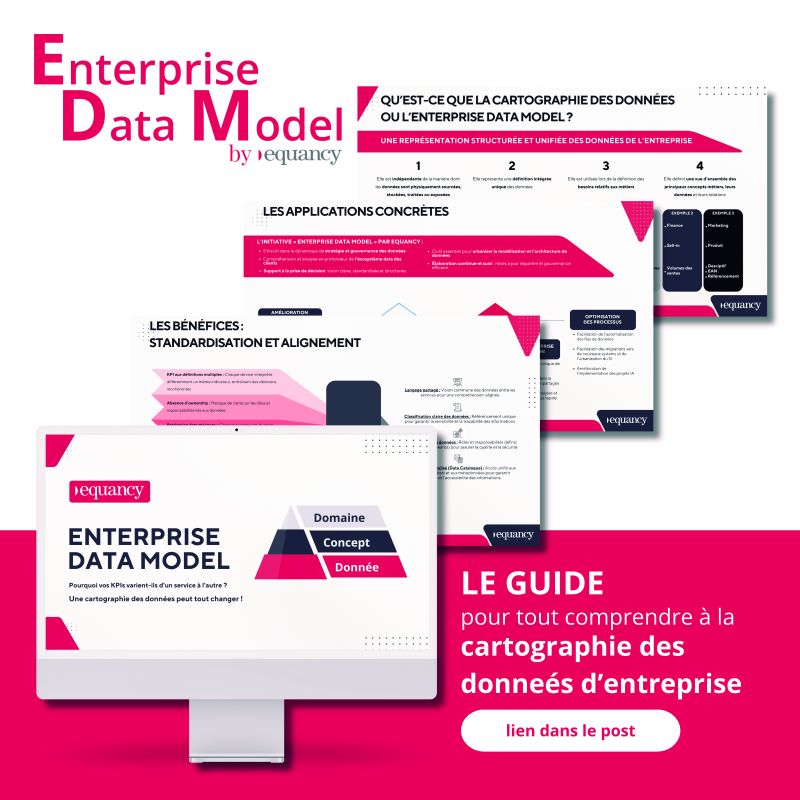MarTech Nebula: How to get out of the fog?
In less than 10 years, the number of MarTech solutions has increased by more than 5200%. While this growth offers a huge range of possibilities for companies, it also makes the process of choosing and integrating these solutions more complex. In this interview, Bertrand de la Selle, Partner in charge of Equancy's Marketing Performance practice, looks at the phenomenon.
HUB Institute: The number of MarTechs and AdTechs available on the market has been growing rapidly for several years. How do you explain this trend?
Bertrand de la Selle: This increase can be explained by 2 dynamics at work on the market:
A focus by brands on customer journeys: advertisers now want to be able to observe, measure, analyze and improve all types of interactions or points of contact with the consumer. For this, the use of data is essential.
The explosion of data capacity: more and more means exist to collect, measure and propose what is called the "next best marketing action". On top of that, MarTechs and AdTechs tools are now much more accessible because their activities, storage, analysis and calculation around this data, are becoming less and less expensive.
The conjunction of more needs, with tools that are less and less expensive and more and more specialized at each point of contact explains this expansion and fragmentation.
- Bertrand de la Selle, Partner in charge of the Marketing Performance practice (Equancy)
Read also: "The 4Ps of a successful data transformation according to Equancy".
HUB Institute: Are these solutions, especially those dedicated to personalization, compatible with the new challenges of privacy?
BS: This subject of privacy is not new, in fact it is an issue that has preoccupied the world for several years. As a proof, Seth Godin's book "Permission Marketing", which symbolized this need to move to permission marketing, is more than 20 years old! However, it's true that recently, people's minds have been awakened on this subject. And for good reason: with the appearance of new regulations, privacy has become a mass phenomenon and more and more people are now attached to the respect of their privacy.
On their side, brands are adopting this paradigm of consent request. We're going to move from interruption marketing, where the consumer feels like their data is being stolen without them realizing it, to trust marketing, where there will be much more clarity about how that data is being used. Brands will certainly have fewer contacts, but they will be consensual and trustworthy. Thanks to first party data strategies, brands will have consented dialogues with their customers. Once this consent is obtained, the paradox between privacy and personalization is no longer relevant since the customer knows in advance that he will benefit from personalized marketing if he agrees to share his data with the brand.
HUB Institute: How do you view the use of AI for marketing purposes?
BS: There are two major points to note about AI. The first is that we are already in a world where we entrust our decisions to algorithms: we choose our route with Waze, our series with Netflix, our next investments with the latest neobanking application. The second point is that, by mass effect, we trust these algorithms more and more. A recent study conducted by the University of Georgia shows that the more complex a problem is, the more humans tend to trust artificial intelligence.
Not everyone is a mathematician or statistician. Not all marketing managers can, or should, be trained in algorithms or Python programming. On the other hand, it is quite easy to demonstrate to everyone how a machine has predicted this or that event, using examples from our daily lives.
- Bertrand de la Selle, Partner in charge of the Marketing Performance practice (Equancy)
Through the projects we are conducting at Equancy, we can see that AI really serves new marketing tools. It is even absolutely necessary, because this technology is the only one capable of calculating the best decision to take. However, tools such as the Customer Data Platform only offer a choice and it is the human being who, based on his or her experience, must decide whether or not to follow the recommendations made by the algorithm. In fact, it is necessary to popularize and train the teams to handle these tools. I don't think we should go for 100% algorithm-driven solutions, because they only take into account a history and are not able to understand all the parameters.
HUB Institute: How do you evolve your IT ecosystem to integrate these new MarTechs and AdTechs?
BS: I think the best way to design an ecosystem is not to think in terms of an ecosystem. You have to think in terms of use cases. Most of the time, when a client needs a new tool, they tend to go for a huge marketing suite. However, it is often oversized in relation to the needs at the time. When you dig a little deeper, you can see that there are 1, 2, 3, 4 or maybe 5 priority use cases on which you should focus. For example, if you have a well-functioning omnichannel business, with channels that communicate and data that flows efficiently from one to the other, you may need a little more personalization on the digital channel. But that doesn't have to mean buying a new solution that will replace all your systems.
Implementing these solutions can sometimes be likened to a game of Jenga: you have a tower of all your solutions. You remove a brick and see if the tower collapses when you replace it with a new, more modern solution. Of course there are times when you remove a basic brick from the foundation and the whole thing collapses. Then, and only then, you have to question whether you should replace your systems.
- Bertrand de la Selle, Partner in charge of the Marketing Performance practice (Equancy)
So you have to ask yourself the right questions: what do you need? What will it produce? What is the ROI of this or that use case? Can our current systems do it? If not, can a single solution for this use case fulfill all the needs? If not, only then do we end up questioning the replacement of one or more systems. I am not saying that there is no time to replace these legacy systems with large solutions that will address all the needs. But often, it is better to start with piecemeal solutions, which are not that much more expensive provided that you can demonstrate the ROI on a use case by use case basis.
Bertrand de La Selle
Digital Acceleration Associate




